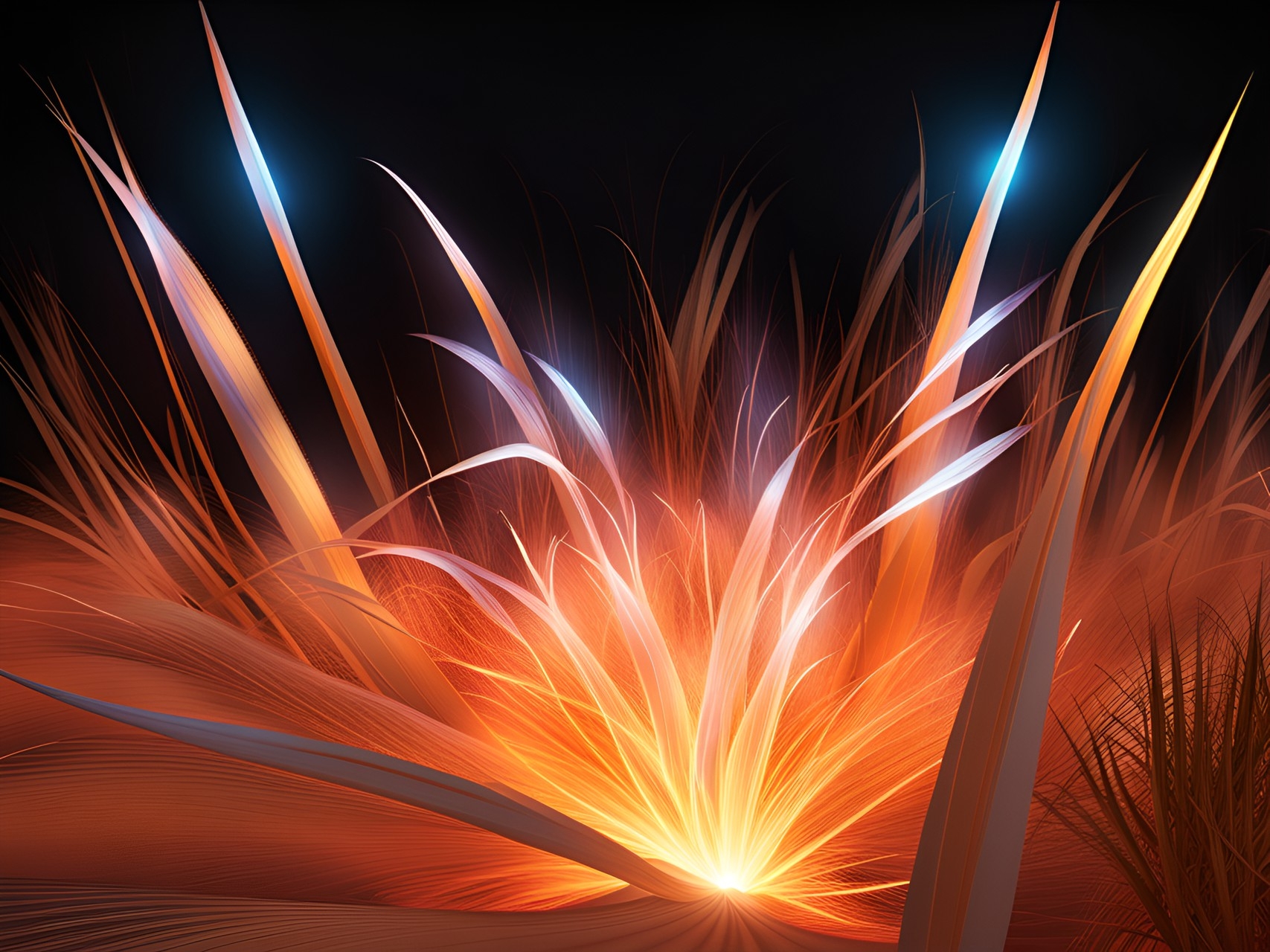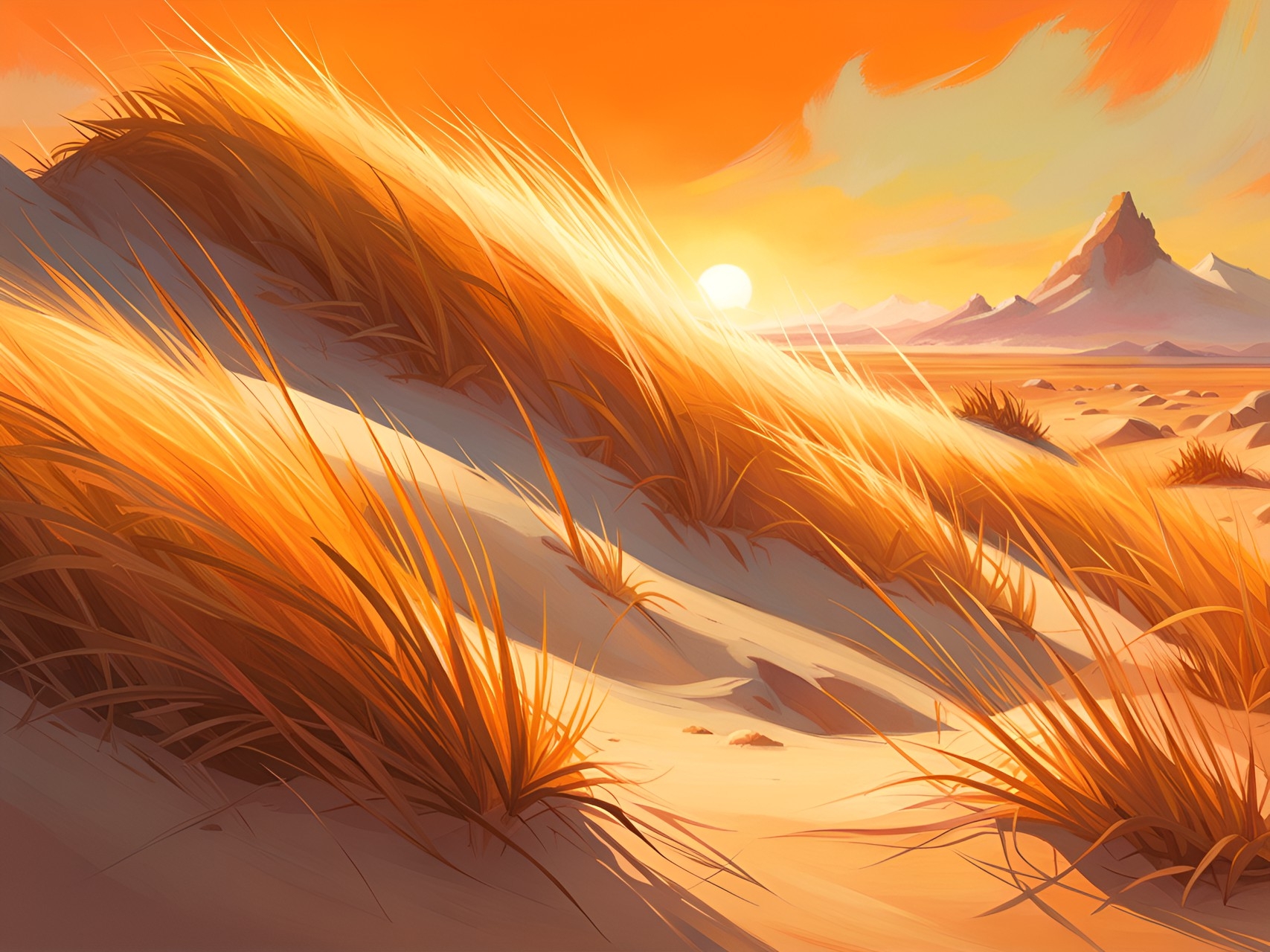Satie Drinn
|
This coarse, prickly evergreen grass is a common sight in the Shamsi Desert, perhaps as ubiquitous as the Khisbat Palm. Satie Drinn persists where most other species cannot, their tall leaves and deep roots sowing themselves into otherwise barren dunes, able to sustain itself on as little as 70 mm or 2.7 in of rain year. It is in fact this hardy species that allows many others to survive in Shamsi whether it acts as food or shelter. One of the most desireable fodder to grazers, Satie Drinn's flowers are spiky and thorned and the plant won't hesitate to transform its leaf blades into radioactive plasma!
Satie Drinn means shining grass, named for the solar blades they can produce which shine intensely with heat and light. Their Kaithur enable Satie Drinn to both absorb solar magic and to convert their leaves into searing hot plasma blades. Yet there are herbivores immune to solar magic, if not empowered by it, assuring only these preferred grazers can do so safely. Shamsi Camel are always drawn to this plant but are careful grazers, only ever eating a few leaves from each plant and occasionally only eating the radiant energy itself, leaving the plant unharmed.
|
Rithaldis' Diet
Thanks to Rithaldis' Diet, Satie Drinn are able to consume or absorb solar energy to heal, to replenish their magic energy or as sustenance. They cannot be harmed by solar energy, whether this is magical or natural, consuming it instead. This includes strong sunlight, ionizing radiation and solar plasma.
|
Anatomy |
Habitat |
This grass grows in arid or semi-arid tropical climates. It prefers sandy or loamy soils which is well-drained and can tolerate poor soil quality, drought and salt-water exposure. It cannot grow in shade. Much like Mashe Lovegrass, they need an extremely sunny and arid environment to thrive, only growing in Shamsi Desert, Kemet and Birit Narim. |
Life Cycle |
Like many plants, Satie Drinn is capable of both sexual and asexual reproduction. Most often, these grasses propogate themselves through stolon runners, stems which branch out across the surface of the soil and spawn a new plant -a clone of its parent- where nodes touch the soil. But they also make an attempt at sexual reproduction, their flowers transforming into a grain like and papery capsule fruit. This capsule has a lid which opens in response to wind, releasing 4-12 feathery seeds per fruit into the air! This method is less successful as vegetative growth, most seeds a favorite food for other Shamsi species, but allows their offspring to spread into new areas. Either form takes place from spring to june. |
UsesSatie Drin is grown in established oases towns as grain or fodder for animals, considered essential for Shamsi Camel pastures. Both the seeds and cereal are edible, added into a grain mixture. It can also be processed into paper or fiber mats. Otherwise, this grass is a cheap ingredient in Material Magic and True Magic, not particularly powerful but affordable--an easy ingredient for solar magic! |











Comments